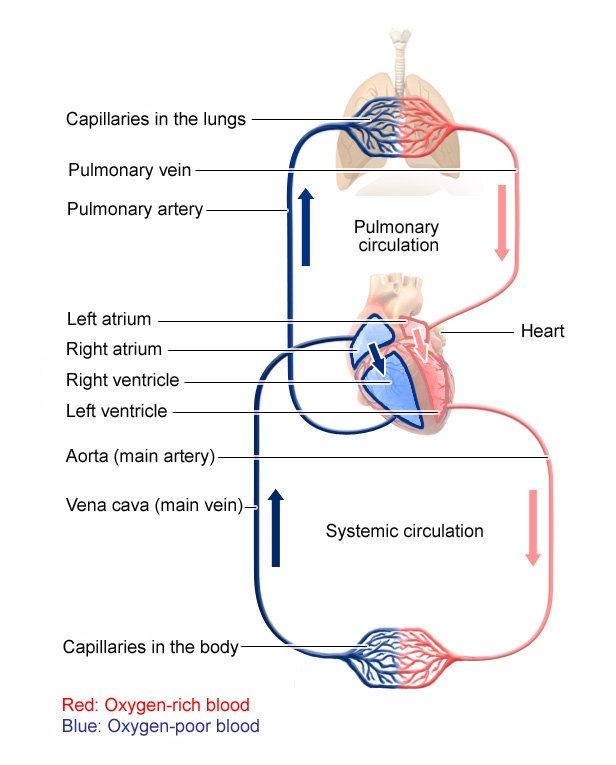How does the blood circulatory system work?
The blood circulatory system (cardiovascular system) delivers nutrients and oxygen to all cells in the body. It consists of the heart and the blood vessels running through the entire body. The arteries carry blood away from the heart; the veins carry it back to the heart. The system of blood vessels resembles a tree: The “trunk” – the main artery (aorta) – branches into large arteries, which lead to smaller and smaller vessels. The smallest arteries end in a network of tiny vessels known as the capillary network.
There isn't only one blood circulatory system in the human body, but two, which are connected: The systemic circulation provides organs, tissues and cells with blood so that they get oxygen and other vital substances. The pulmonary circulation is where the fresh oxygen we breathe in enters the blood. At the same time, carbon dioxide is released from the blood.


